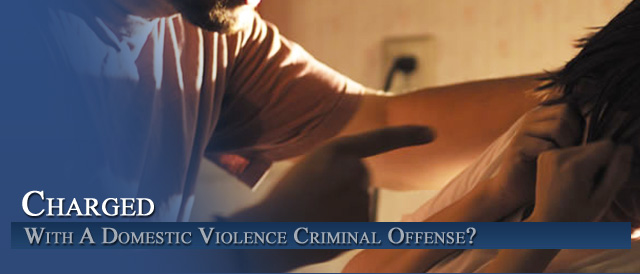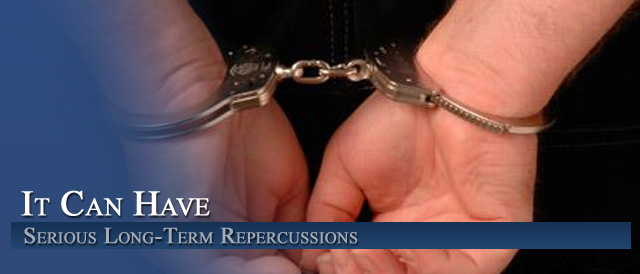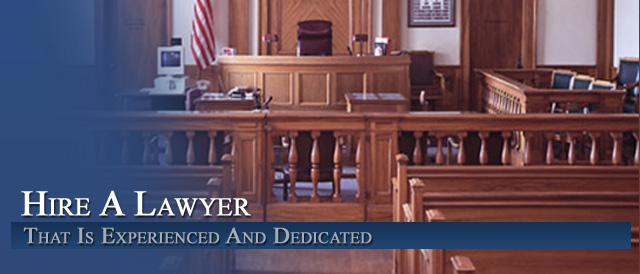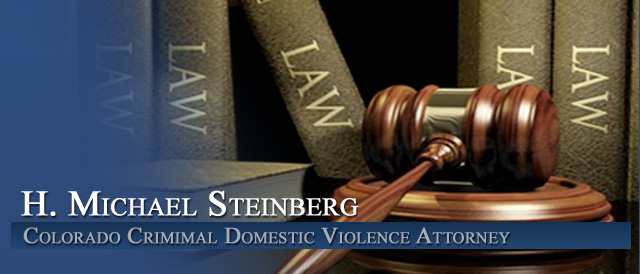




Colorado Restraining Orders
Understanding All of the Types of Colorado Protection Orders*
A protective order is an order issued by a court telling one person (the restrained person) to stay away from and not to hurt, threaten, or communicate with another person. A protective order is also known as a protection order, a restraining order, a civil protective or restraining order, an injunction, a no contact order. The order is usually issued by a judge for the protection of family members exposed to domestic violence. It orders the abuser to do or not to do certain things that the judge specifies.
Protective orders can be obtained by victims and also by employers.
Employers Obtaining Protective Orders
Pursuant to section 13-14-102, Colorado Revised Statutes, a business can seek a civil protective order against a person who has threatened, attempted or completed assaults, and/or bodily harm. Many courts in Colorado will issue a protective order for a business if there has been a threat, attempted or completed assault, or bodily harm. There are a few courts that feel that this is not appropriate. (NOTE: 2002 HB 1051 clarifies for the courts that they are authorized to issue such orders. As of March 4, 2002 the bill had passed the House and was to be heard in the Senate.)
To seek a protective order:
Contact the county or district court in your area about procedures for obtaining protective orders (many jurisdictions have specific court rooms or times when protective order petitions are heard).
Appear at the appropriate time without the person to be restrained (ex-parte) and explain to the judge why you want a protective order. You must show that there was a threatened, attempted or completed assault, or bodily harm against you, your employee(s), or your client(s)/customer(s). It is required that you tell the court, at least, about the most recent incident. You can also tell the court about other incidents. You must also state that you, your employees, and/or your clients/customers are fearful that future assaults or bodily harm will take place. If the judge finds that imminent danger exists to you, your employees, or your clients/customers, the judge will issue a temporary protective order. You will receive a copy for yourself and one to have served on the restrained person.
Once a temporary protective order is issued, you must have it personally served on the restrained party. The Sheriff’s office will serve the protective order (usually for a fee). (Once the restrained party is served, she/he must follow the protective order and stay away from your business and follow any other condition the judge ordered.)
The temporary protective order will be effective until the permanent protective order hearing. The hearing must be set to take place within 14 days. If after hearing evidence (mostly presented by witnesses) from both parties, the judge believes that the restrained party threatened, attempted or completed assault, or bodily harm, and if not restrained will continue to do so, the judge will issue a permanent protective order. (In Colorado the protective order is effective forever unless the court vacates — cancels — the protective order.)
If the restrained person does not appear for the permanent protective order hearing, the judge will issue a permanent protective order if you wish her/him to do so. If you fail to appear for a permanent protective order hearing, the temporary protective order will be dismissed and you will have to start over. (The judge can grant continuances of the hearing if you show up and explain why you need a continuance, e.g., a witness is sick or the restrained party could not be served.)
If the restrained person ever wants to vacate or modify the conditions of the protective order, she/he must notify you through the courts (if they can find you) and come back to court for another hearing. She/he would claim that the protective order is no longer needed. It would be up to you to say otherwise.
Obtaining Protective Orders: (these are for victims of Domestic Violence)
Reasons for getting a protective order:
While some people who have restraining orders against them try to violate those orders, most don’t violate the orders.
A protective order gives the abuser a message from an objective authority figure that abuse must stop.
A protective order empowers the victim by having an objective authority figure validate the reality of her/his danger.
A protective order informs law enforcement that the victim is serious about stopping the abuse and keeping the abuser away.
A protective order delivers (hopefully) consequences if the abuser continues his/her abusive behavior.
A protective order documents the victim’s attempts to change the situation and distance her/himself from the abuser.
A protective order can allow the victim time to contact a lawyer.
A protective order may make the justice system aware of the victim’s situation and provides the victim with a way to get some added help from law enforcement before violence happens.
If the victim calls law enforcement when someone has, or is trying to violate the order, this will give him/her evidence to use in legal cases they may have against the restrained person.
If the person the victim has a protective order against violates the order, the victim can call the law enforcement, possibly before the restrained person can cause more harm.
What a protective order can do:
Prohibit further acts of domestic violence.
Prohibit the abuser from directly communicating with the victim (via phone, fax, email, or in person).
Prohibit the abuser from going within a specific distance of the victim’s home or place of employment.
Prohibit the abuser from going near the home, child care facility, or school of a child protected under the order.
Provide for the victim parent to have temporary decision-making responsibility for children.
Set child support or spousal support.
Order the abuser to attend counseling or an intervention program.
Provide for the possession of mutually-owned property, such as a home or car.
Help the victim establish the conditions when she/he should seek assistance from law enforcement.
Who can get a protective order:
Adults who are related to the abuser by blood or marriage. This includes a spouse, parent, sibling, parent-in-law.
Ex-spouses.
Persons currently living with an abusive partner or who have lived together in the past or who have a child together.
Persons who have been involved in “an intimate relationship”
In Colorado there are several ways a protective order may be issued.
(1) A mandatory protective order is issued by the court in a criminal proceeding (Colorado Revised Statutes Section 18-1-1001).
This order retrains a person from harassing, molesting, intimidating, retaliating against, or tampering with any witness or victim. In cases of domestic violence the court can order the defendant:
To stay away from victim’s home or other location including work;
To not have direct or indirect contact with the victim;
To not possess firearms or other weapons; and
To not possess or consume alcohol or controlled substances; or
Any other order the court thinks is appropriate to protect the safety of the victim.
This protective order lasts until the defendant is acquitted or until the defendant is convicted and completes his/her sentence.
(2) A civil protective order is issued by a court after a victim petitions the court to have someone stay away from them. A civil protective order requires the victim to go to court at least twice.
At the first hearing, the victim provides information about the harm the other person has caused her/him and why he/she thinks the person will hurt them again. At the second hearing, the restrained person (defendant) has an opportunity to appear and give reasons why they think the order should not be made permanent. If the order is made permanent, it is in effect forever, unless the court cancels the order. However, the parts of the order concerning children will end after 120 days. It is therefore necessary that the victim also file in District Court for separation, divorce, or custody, so that he/she can get permanent custody and child support orders. (Colorado Revised Statutes Section 13-14-101,102)
Where and how to get a civil protective order:
A person doesn’t need an attorney to file a protective order, although they may choose to use one.
A person can get a standardized form at the courts, or through the Judicial Branch Web site: www.courts.state.co.us.
There is a filing fee with the court and an additional fee to have the other person served with the order. These fees may be waived for low-income people.
The victim can check for times and locations at local courthouse or domestic violence agency and for court filing fees (on average $30; can be paid over time or waived if unable to be paid).
The process to obtain an order will take at least two weeks.
First a person can get a temporary order which is good for 14 days. Then he/she attends a permanent order hearing (usually within 14 days) where the judge will decide if there is a reason to make the temporary order permanent.
(3) A temporary injunction automatically takes effect at the time of filing for divorce. This injunction restrains both parties from:
- transferring, encumbering, concealing, or disposing of marital property;
- molesting or disturbing the peace of the other party;
- removing minor children from the state without the consent of the other party or an order of the court; or
- changing insurance without 14 days notice or written consent or court order. (C.R.S 14-10-107)
A protective order is only one part of a safety plan. Having a protective order does not ensure safety. A protective order is only as good as the abuser’s willingness to obey it. A protective order should not be used to give a victim a false sense of safety; it is not a bullet-proof shield.
Unfortunately, protective orders can sometimes have the opposite effect for which they are
intended. If an extremely violence abusive partner – an abusive partner who has no respect for the law – or an abusive partner with no concern about the consequences of his/her behavior is served with a protective order, he/she may seek revenge on his/her partner and place her/him, their children, co-workers, family, and friends in danger.
All law enforcement officers in Colorado are required by law to enforce all valid protective orders, regardless of where in the United States they were issued (including Indian reservations, other states, Puerto Rico, and other U.S. possessions and territories). This is known as giving “full faith and credit” for the enforcement of protective orders.
A person can get a protective order in one state and travel or move to Colorado and Colorado law enforcement officers must enforce the order.
A person can get a protective order in one part of Colorado and then travel or move anywhere in the state and Colorado law enforcement officers must enforce the order.
In other states that have passed full faith and credit laws, law enforcement officers must enforce all valid restraining orders issued in the U.S. A victim can contact the local District Attorney’s Office to find out if that state will enforce an out-of-state protective order.
In Colorado a person can let law enforcement officers know that they have an out-of-state protective order by registering the protective order with the Central Registry of Restraining Orders. Before doing that they can call a local domestic violence program to discuss the advantages and disadvantages of registering the protective order and to find out where and how to register.
Once a person has a protective order there are several things they should know:
Always carry the protective order with them and give a copy to a trusted neighbor or family member. Make a copy to put in a safe place. A copy can also be placed in their personnel files at work.
Call law enforcement if this order is broken, each and every time. When law enforcement responds they should:
- show them the protective order;
- tell them what happened;
- ask law enforcement if they will file charges;
- get paperwork from law enforcement about what they’ve told them and what action they are taking;
- get the name of the law enforcement officer.
If the person has not consistently reported previous violations, law enforcement may be hesitant to enforce the order later. Law enforcement is required to arrest the abuser if they have probable cause to believe that the protective order has been violated.
Each and every contact the defendant makes with the person is a violation of the protective order and should result in a separate criminal charge being filed against him or her. “Contact” means the defendant cannot do things such as telephone, fax, e-mail, send cards, send letters, or send flowers or gifts.
The person should have an additional plan to be safe if the abuser violates the order and law enforcement is not responding quickly.
The person should inform neighbors, friends, family and others that they have a protective order.
The person should go to court for the Temporary and Permanent hearing; bringing witnesses and evidence with them. They must prove that the person they want to have restrained has injured or threatened them or their children. Evidence that may help prove this includes: law enforcement reports, medical records, eyewitness testimony, and the victim’s testimony. If the victim does not go to court for the Permanent Protective Order hearing, the Temporary Protective Order will expire.
A person can gain temporary care and control of their children. If they received an order for temporary care and control of their children, that order will expire in 120 days. If they want care and control of their children for a longer period of time, they must go to District Court and file for separation, divorce, or parental responsibility (custody).
A person should read and understand their protective order. If they don’t understand it, they should ask the judge, victim advocate, or lawyer to either explain it or direct them to someone who will help them. They should understand:
- what a violation of the restraining order looks like;
- how long the order lasts;
- what has to happen for the order to be effective (the other person has to receive a copy of the order); and
- what it says about their children.
The person obtaining the protective order should have the complaint and temporary protective order served personally on the person they are trying to keep away from them. Law enforcement officers in some places will serve these papers. The person may hire someone (looking in the Yellow Pages under Process Servers) or ask someone over 18 who is not involved in the case to serve the papers.
If the abuser is to stay away from specific addresses, the victim may consider giving a certified copy to their day-care provider, neighbors, or others at those addresses so that they can use it if needed.
If they want to change the protective order, they need to go back to court and get it changed. Only the court can allow the abuser to see or talk with the person obtaining the protective order or other people the protective order tells him or her to stay away from.
* This web page is not intended to promote restraining orders — it is intended to assist all Coloradans with understanding how they work, who tries to obtian them and why.. knowledge is power. H
More Information:
- Colorado Civil Protection Orders And The Loss Of The Right To Bear Firearms – 13-14-105.5
- Colorado Domestic Violence Permanent Civil Protection Order Laws – Title 13 and 18
- Colorado Violation Of Protection Orders Cases -18-6-803.5. The Why and The How
- How To Lift A Colorado Domestic Violence No Contact Order by Denver Criminal Defense Lawyer – H. Michael Steinberg
- Lifting Or Modifying Colorado Civil Restraining – Protection Orders Pursuant to C.R.S. 13-14-108
- Colorado Criminal Law – Civil Restraining Orders – Common Sense Rules When You Have a Permanent Restraining Order Pending In Court Against You
- Questions and Answers About Violation of A Restraining Order in Colorado
- Colorado Domestic Violence Cases and Restraiing Orders
- Colorado Domestic Violence Restraining Orders – The Trick -Making Me Break the Restraining Order
- Colorado Domestic Violence Issues – The Initial Steps To Take In Dealing with a Restraining Order?












